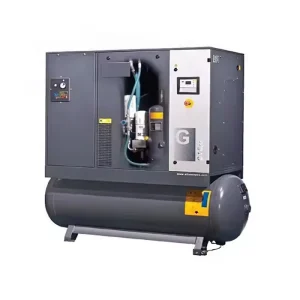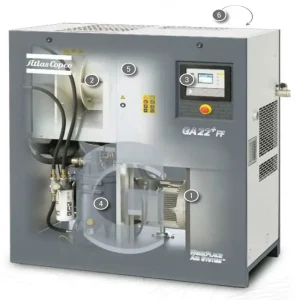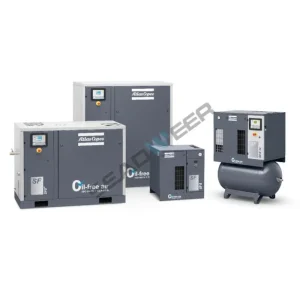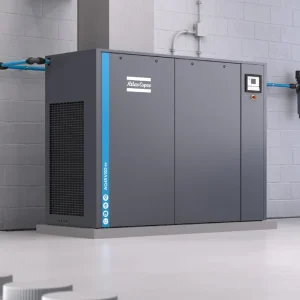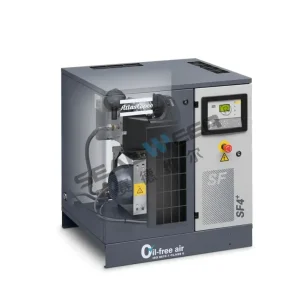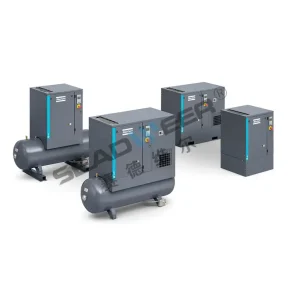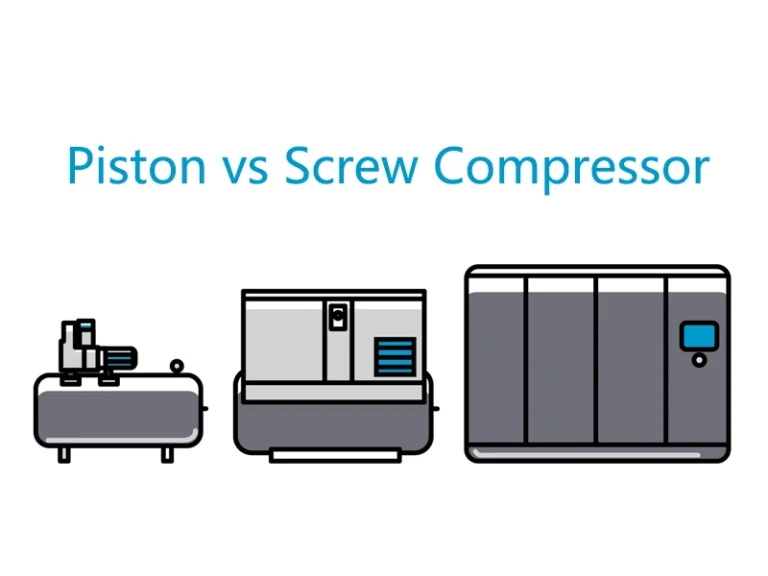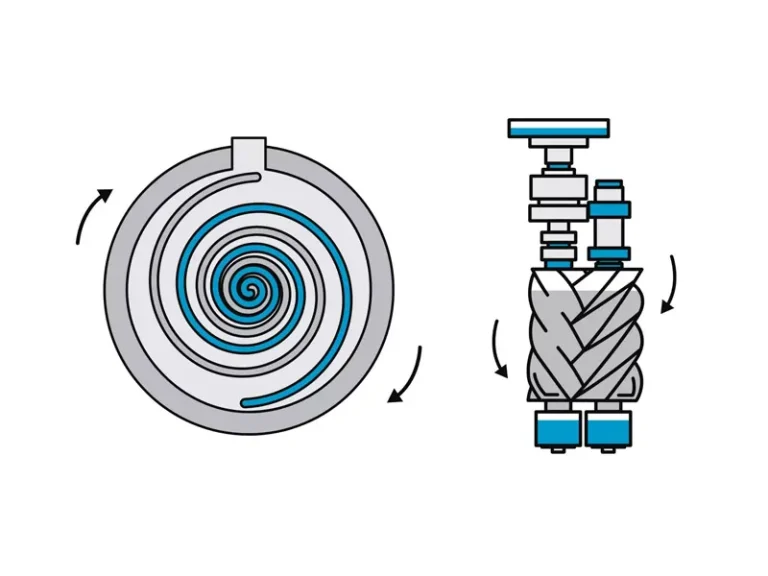When selecting a rotary screw compressor, one of the most important decisions is choosing between an oil-injected (also called oil-lubricated) and an oil-free model. Both types serve the same fundamental purpose—supplying compressed air—but they differ significantly in design, operation, cost, and suitable applications.

This article explores the key differences between oil-injected and oil-free rotary screw air compressors to help you make an informed decision for your business.
Contents
- 1 What Is an Oil-injected Rotary Screw Compressor?
- 2 What Is an Oil-free Rotary Screw Compressor?
- 3 Key Differences Between Oil-injected and Oil-free Compressors
- 4 Which One Should You Choose?
- 5 Industry Applications
- 6 Long-term Considerations
- 7 Conclusion
- 8 Reference
- 9 Related Oil-inject Air Compressors
- 10 Related Oil-free Air Compressors
What Is an Oil-injected Rotary Screw Compressor?
Oil-injected air compressors use a small amount of lubricating oil that is injected into the compression chamber. This oil serves three main purposes:
- Lubricates the rotors for smoother operation
- Seals the gaps between the rotors to increase efficiency
- Cools the air during compression to prevent overheating
After compression, the oil-air mixture passes through a separator where most of the oil is removed and recycled. The air then continues to an aftercooler before being delivered to the application.
What Is an Oil-free Rotary Screw Compressor?
Oil-free rotary screw compressors do not use oil inside the compression chamber. Instead, they rely on:
- Precision engineering with tight rotor tolerances
- Special coatings (e.g., PTFE or ceramic)
- Alternative materials like water or air for cooling (in some designs)
These compressors deliver clean, oil-free compressed air, which is essential for sensitive industries like food, pharmaceuticals, and electronics.
Key Differences Between Oil-injected and Oil-free Compressors
| Feature | Oil-injected | Oil-free |
|---|---|---|
| Lubrication | Oil used inside the compression chamber | No oil in compression chamber |
| Air Purity | May contain oil traces (requires filtration) | 100% oil-free air output |
| Initial Cost | Lower | Higher |
| Maintenance | Regular oil changes and separator maintenance | Less frequent but more specialized service |
| Energy Efficiency | Generally more efficient | Slightly less efficient due to tighter tolerances |
| Suitable Applications | General industry, automotive, metalworks | Food, pharma, electronics, medical |
Which One Should You Choose?
Choose Oil-injected if:
- You need a reliable and cost-effective solution for general industrial use
- Your compressed air quality requirements allow minimal oil traces
- You prioritize lower initial investment and higher energy efficiency
Choose Oil-free if:
- You operate in a regulated industry where air purity is critical (ISO 8573-1 Class 0)
- You want to avoid downstream filtration and contamination risks
- You can justify the higher investment for clean air and long-term reliability
Industry Applications
| Industry | Recommended Type | Reason |
|---|---|---|
| General Manufacturing | Oil-injected | Cost-effective and efficient |
| Food & Beverage | Oil-free | No oil contamination in production |
| Pharmaceuticals | Oil-free | Complies with strict hygiene standards |
| Automotive Workshops | Oil-injected | Durable for tools and equipment |
| Electronics | Oil-free | Sensitive processes need ultra-clean air |
| Textile & Packaging | Oil-injected / Oil-free | Depends on the process and product contact |
Long-term Considerations
Total Cost of Ownership (TCO)
- Oil-injected compressors have a lower purchase price and high energy efficiency, but higher maintenance costs due to oil changes and separator replacement.
- Oil-free compressors cost more upfront but offer long-term savings in applications where oil contamination would lead to product loss or production downtime.
Environmental Impact
- Oil-free compressors are often chosen for environmentally conscious operations.
- They reduce the need for oil disposal and minimize the risk of oil leaks or contamination.
Conclusion
Choosing between an oil-injected and oil-free rotary screw compressor depends on your industry, air quality requirements, and budget. Oil-injected compressors are ideal for general industrial use, while oil-free models are essential for clean, contamination-free operations. Understanding the differences will help you invest in the right technology for maximum performance and peace of mind.
Reference
1.Oil-free vs. Oil-injected air compressors. https://www.atlascopco.com/en-sg/rental/resources/blog/oil-free-vs-oil-injected-air-compressors
2.The Difference Between Oil-Injected and Oil-Free Rotary Screw Compressors. https://www.airmac.com/difference-oil-injected-oil-free-rotary-screw-compressors/
Related Oil-inject Air Compressors
-
Atlas Copco Air Compressor G-Series
$8,000.00 – $10,000.00 -
Atlas Copco Air Compressor GA11+ – 30 FF
$880.00 – $1,800.00 -
Atlas Copco Air Compressor GA110VSD
$6,800.00 – $10,000.00 -
Atlas Copco Air Compressor GA132
$6,800.00 – $10,000.00
Related Oil-free Air Compressors
-
Atlas Copco Air Compressors SF8+ SF11+ SF15+ SF17+ SF22+
$10,000.00 – $30,000.00 -
Atlas Copco AQ 15-55 VSD Oil-free Water-Injected Compressors
$10,000.00 – $30,000.00 -
Atlas Copco Oil Free Scroll Air Compressor SF4ff
$3,800.00 – $6,000.00 -
Atlas Copco Screw compressor GX 3 FF
$5,000.00 – $6,000.00


